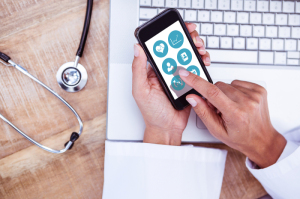From the May 2017 issue of HealthCare Business News magazine
By Chris Byers
A growing number of organizations across industries are developing mobile-friendly services and solutions now that mobile browsing exceeds desktop browsing.
The health care industry is not exempt from this shifting landscape, but many health care organizations are lagging behind.
The Healthcare Information and Management Systems Society (HIMSS) conducted a 2015 survey in which 83 percent of health care providers surveyed said they felt strongly that their organization should deploy mobile devices. The same study determined mobile health care solutions had a positive impact on patient engagement and helped providers achieve over 20 percent in savings in areas such as resource utilization and preventive support care.
Though many health care facilities are falling behind the mobile movement, it’s not too late to start using mobile technology to provide convenient, accessible health care for patients. The following are a few ways to connect with patients, wherever they are.
Text communications
Text (or SMS) communication is another fantastic tool for mobile patient engagement.
According to HIMSS, 57 percent of health care providers are already using text communications to keep patients informed of their appointments and prescriptions. Some providers even allow patients to confirm, reschedule or cancel an appointment via text. This convenient alternative allows patients more flexibility, rather than being required to call during office hours to make appointment changes.
Health and wellness updates are another way some health care organizations have started to use text communications. For example, the free Text4baby program is an interactive way for expecting mothers to receive important information about their pregnancy. These text updates include appointment reminders, health and safety tips and details about how their baby is growing each week.
Health care apps
In the previously mentioned HIMSS study, only 31 percent of health care facilities have an organization-specific app. Considering over 50 percent of smart-phone users gather health-related information through mobile health care apps, there is enormous room for expansion in this arena. The growing adoption of these apps has benefits for both patients and medical staff.
Apps allow patients to become more engaged in their own care. Many of these apps are focused on the patient and are specialized in tracking health factors like diet, exercise, pregnancy or sleep. The iPhone’s native “Health Data” app is one example, tracking various health measures through automatic syncing or manual entry.
